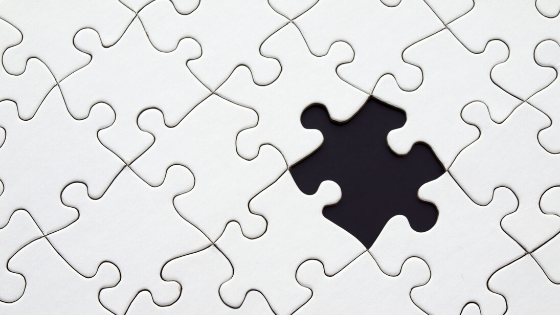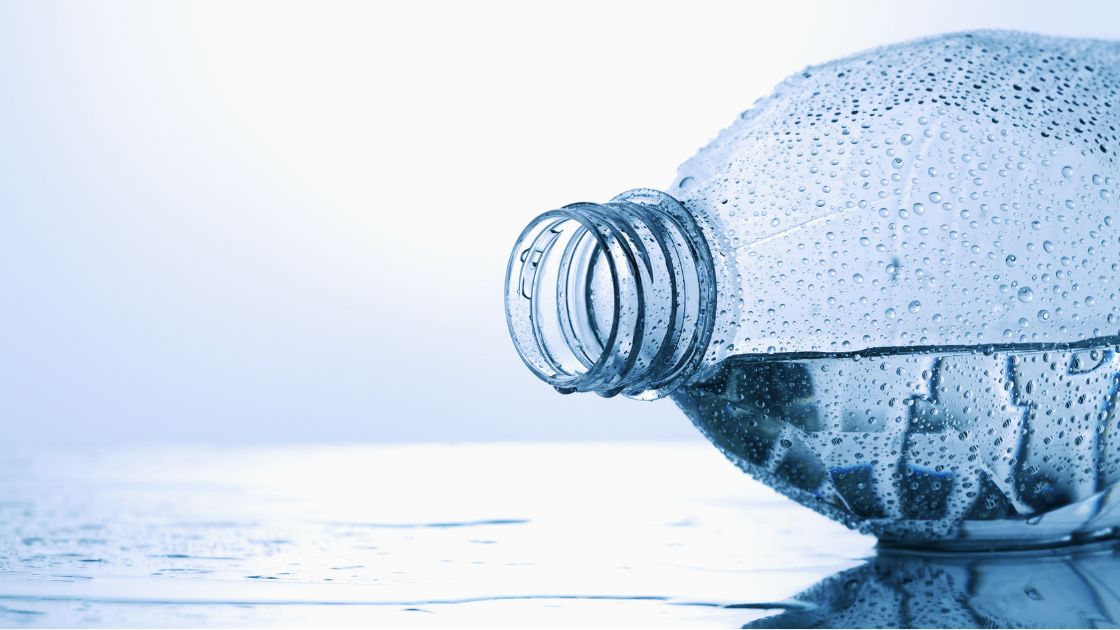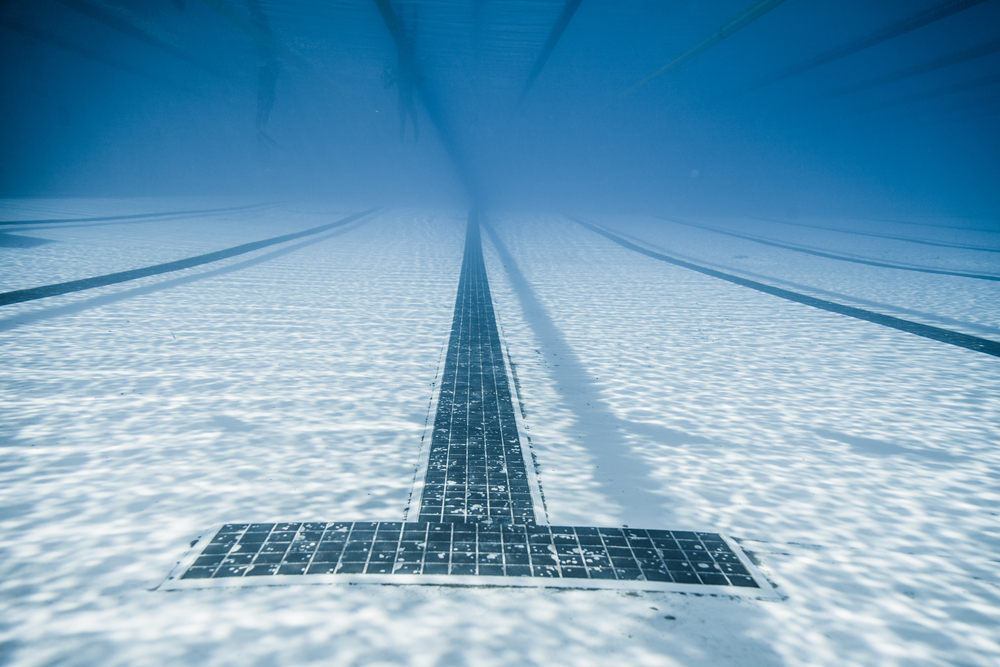Natatorium Design Resources
Natatorium design is a niche skill. Moreso than typical commercial buildings, indoor pools have variables that require special attention and expertise from designers. Natatorium environments create extremes in temperature, humidity, evaporation, vapor pressure, and myriad other factors.
 Let's think about what an indoor pool is. It is a giant body of chemically-treated water that people contaminate daily. Now let's enclose the pool with a building, and try to condition the indoor air. Physics tells us that air and water interact; factors such as evaporation, condensation, relative humidity and vapor pressure are inevitable. These things happen in a restroom too, but on such a small scale, they are negligible. In a natatorium, these moisture factors dominate the environment.
Let's think about what an indoor pool is. It is a giant body of chemically-treated water that people contaminate daily. Now let's enclose the pool with a building, and try to condition the indoor air. Physics tells us that air and water interact; factors such as evaporation, condensation, relative humidity and vapor pressure are inevitable. These things happen in a restroom too, but on such a small scale, they are negligible. In a natatorium, these moisture factors dominate the environment.
Compound these unique air physics with a vicious airborne byproduct of water chemistry called chloramines, and we have the potential to destroy the building itself. Literally.
Air physics need to be managed and controlled by a properly-designed pool dehumidification system. Also, we must manage water chemistry with competent operators, quality equipment, and a proactive chemistry strategy. If we miss any of these elements, costly air quality problems are likely to happen.
Natatorium Design Considerations
Natatorium design includes a broad range of topics, so let's try and simplify. Here, we link to articles about specific components in natatoriums, and a brief description of them in this resource guide. We specialize in the bold topics on this list. If you need help finding what you are looking for, reach out to us.
- Structure, Building Materials and Construction
- Plumbing and Electrical considerations
- Mechanical Design (HVAC)
- Duct and Equipment Layout
- Equipment selection and sizing
- Airflow objectives and strategy
- Source-Capture Exhaust
- Pool Design
- Hydraulics, circulation and filtration
- Chemical delivery systems and controllers
- Pool mechanical equipment and systems
- Accessibility and ease of operation
- Operational Considerations
- Health and Safety, codes, visibility
- Personnel turnover, training, competence
1. Natatorium Structure, Building Materials and Construction
A prominent commercial pool builder we know has what they call their Architectural Checklist. It is a thorough, multi-page checklist document that is reviewed by the design and construction teams prior, during, and after the project. It helps assign scope of work and gets signed acknowledgment from every party involved as to what their scope of work includes.
This system is simple yet brilliant. It reminds us of the pre-flight checklist for any commercial airline. The pre-flight checklist is a federally mandated procedure, and it keeps travelers as safe as possible. As frustrating as a ground delay or flight cancellation can be, aren't we all grateful they found the problem on the ground?
The architectural checklist covers everything from construction materials to the clearances required for the building to be structurally sound. It talks about all the connections between different people. For example, when the pool plumbing needs to connect to drainage, which falls in the mechanical scope, the checklist specifies what needs to happen, and what should NOT happen.
Beyond what a pool builder is involved with, we should also mention parts of the building envelope itself. A critical item is a vapor barrier, to block moisture transfer through the walls of the natatorium. Unlike most commercial buildings, which put their "vapor paper" layer on the outside, natatoriums need it on the inside. Moisture tends to push out of natatoriums. If this occurs–especially on exterior walls–efflorescence can occur. Moisture will push through concrete and brick over time. It's a mess.
Articles
2. Plumbing and Electrical Considerations
We often see deck drains that have undersized plumbing, and pipe fittings that leak in pump rooms. Electrical problems are common too. We see loose wires, excessive wiring, exposed connections and other legitimate safety hazards. How about overloaded power breakers, or undersized wiring? We have seen systems requiring 30 amps being powered through 20 amp wiring. Shortcuts are not only problematic, they are dangerous.
Proper bonding and grounding of electrical systems is paramount for swimming pools, and yet so often we see broken bond ties that snapped because of corrosion. Chloramines, anyone?
While we are not experts in plumbing or electrical design or issues, we know they are common problems. We only bring them up to shed light on these details.
Articles
- coming soon!
3. Mechanical Design (HVAC)
Mechanical design is our focus at Chloramine Consulting. We know enough about chloramine problems to recognize that the most room for improvement falls in the HVAC realm. Indoor pool facilities spend a disproportionate amount of money in this department. Not only are the up-front costs of pool dehumidification large, so is maintenance. The power bills to heat and cool can be ridiculous if a system is not properly sized, or optimized for heat recovery. Energy efficiency alone is a good enough reason to budget for a quality pool dehumidifier (as opposed to a commercial air conditioner). Cutting corners up front almost always costs more later.
Fortnunately, with today's technology, conditioning the air in a natatorium is more efficient than ever. Systems have automation, pressure automation, occupied/unoccupied modes, and heat recovery. Rather than spending huge money on electric heating or cooling, many of these systems can actually reclaim heat from out-going air, and pre-heat incoming outdoor air. They can also heat pool water, or other things. The point is, recycling energy helps save cost.
But swimmers coughing and struggling to breathe don't really care about energy savings. When we were swimming, we certainly didn't.
What matters is air quality, and dehumidifiers are not designed to remove bad air. Much less can they separate bad air from good. For that, it takes knowledge of airflow in the natatorium, and a clear strategy to remove airborne chloramines from the natatorium. The supply layout must be appropriate for the shape of the room and the pool itself. The equipment must be sized properly, yes, but where we move air is every bit as important as how we condition it...if not more important.
The best system we know of is called the Paddock Evacuator®, and it utilizes a concept called source-capture exhaust. Source-capture is the same idea as a big range hood over a kitchen grill or stove. It is a focused point of exhaust, designed to remove a certain segment of air out of a room. Chloramines are the perfect candidate for source-capture, and the results are proven.
- Duct and Equipment Layout
- Equipment selection and sizing
- Airflow objectives and strategy
- Source-Capture Exhaust
Articles
- Five Common Mistakes in Natatorium Design
- Dehumidification Problems in Natatoriums
- The Difference Between Return Air and Exhaust Air
- Understanding Source-Capture Exhaust
- Pool Dehumidifiers vs. Air Conditioners
- Unintended Natatorium Design Flaws
- Don't Blow Air Directly onto a Pool
- Pool Evaporation, Condensation, and Dew Point
- The Case for Recycling Dehumidifier Condensation Water
External Articles
- 21st Century Natatorium Design Guide (Desert Aire)
- Natatorium Design Guide (Seresco)
- Paddock Evacuator®
4. Pool Design
Anything that holds or moves pool water is considered part of the pool design, including (but not limited to) plumbing, hydraulics, the shape of the vessel itself, everything in the pump room, and ancillary deck equipment like starting blocks and lifeguard chairs. Rail goods such as handrails, ladders, and handicapped lifts are also in the pool designer's scope of work. Typically, architects will hire a pool consulting firm, comprised of design engineers and swimming pool experts.
The pool consultant's job is to design everything needed for the swimming pool itself, minus the building around it. To them, an indoor pool is the same amount of design work as an outdoor pool. The natatorium envelope falls in someone else's scope of work.
We often work with pool consultants, and our scope of work rarely–if ever–conflicts with theirs. Chloramine Consulting is a sub-contractor to a pool consultant or architect on new design projects. Our primary focus is to help Mechanical/Electrical/Plumbing (MEP) engineers design their systems to match the pool. We are not experts of pool design itself, though we do understand much of it.
Believe it or not, pool consultants have a scope of work that has little to do with indoor pool air quality problems. Chloramines are an inevitable part of chlorination, and when they off-gas into the air, they become an air problem. That's not to say pool consultants cannot do anything to help, it's just that their options are limited. Primarily, a consultant needs to select properly sized, quality equipment. Such equipment includes filters, pumps, chlorinators, chemical feeders, automation/controllers, and secondary disinfection systems.
A well-designed pool should operate smoothly and efficiently. With the help of secondary oxidizers and disinfection systems like UV, Ozone or AOP, chloramines can be mitigated...but not prevented.
Articles
- What is a Natatorium?
- Pool Water Chemistry, Part 1: Pool Sanitization
- Pool Water Chemistry, Part 2: Combined Chlorine
- How Big is an Olympic Swimming Pool?
- What makes a swimming pool fast?
- Safe Pool Chemical Storage
5. Operational Considerations
A pool works only as well as it is operated. Some of the biggest challenges for natatorium facilities is personnel related. Rapid turnover, short-cutted training for new employees, and overall lack of aptitude of operators. That is no insult to operators, because learning how to operate a commercial pool is a very difficult thing to do! Pool operation is not an easy job, and involves critical thinking, attention to detail, and a lot of training. When a new employee is pushed into a new role quickly, often times they are not given time to absorb the knowledge needed for the job, and the entire facility feels it.
Natatorium operations go beyond programming swim lessons and lane space for swim teams. The pool operator is responsible for everything going on in the pump room, the pool, and all-too-often, other parts of the facility. The job involves long hours and high stress. To make matters worse, when there are air quality problems, the pool operator is usually the first person blamed.
It needs to stop.
Operators can only do so much with the tools they are given. But just so our opinion is out there in writing: even with a perfect pool design, perfect equipment and installation, and state-of-the-art everything, chloramines can (and will) still happen. Air quality problems must be addressed from both sides of the problem, both water and air.
So how can designers like architects, engineers and pool consultants help operators? Start by designing with the end users in mind. We have been in countless pump rooms that are crammed and difficult to walk through. It is a workout for the operator to even get to some of the equipment, and then they realize it cannot be accessed because another piece of equipment is too close to it, or in the way. Plumbing layouts can be like spaghetti, which makes things even more complicated. The remedy: simplify.
Give operators space to work with (architects), and a pump room that makes sense (pool consultants). Install plumbing and equipment with care and forethought (pool builders), and please ventilate the pump room properly (mechanical engineers)! It is very rare to find a pump room that is comfortable to be in for more than 5 minutes.
Operators need accessiblity to equipment and storage, as well as visibility of controllers and other components. They also need good visibility over the pool itself, so architects should keep that in mind when locating the lifeguard office. Lastly, regular training of operators on each piece of equipment is very helpful.
Articles

 By
By


